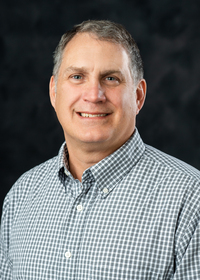The Only Good Broiler Breeder Egg Is a Fertilized Egg
The main goal of broiler breeder management is producing eggs. But the only good broiler breeder egg is a fertilized egg. Fertility, the percentage of eggs laid that are fertilized, is very important in poultry production. If an egg is not fertilized, then, of course, it will not contain an embryo and will not hatch. Simply put, hatchability can never be better than fertility.
Hatchability is around eight percentage points lower than fertility because many chick embryos are usually lost during incubation. For example, even if 93 percent of the eggs laid are fertilized, then under normal incubation conditions only 85 percent of the eggs will hatch. This example illustrates how fertility must be very good to get above-average hatchability and hatch bonus pay.
Breeders need to be kept under ideal conditions for maximum life of flock fertility. The chicken’s reproductive system is very sensitive to the bird’s environment, and under poor conditions the reproductive system will dwindle. For example, the environment can cause a rooster’s testes to increase or decrease in size by several hundred fold. But, before we can understand which management factors influence fertility, we must first examine the fascinating process of fertilization in poultry.
Fertilization
Fertilization in any animal depends on production of eggs from the female and sperm from the male. A problem with either sperm or egg production can decrease fertility. The rooster’s reproductive system is simple when compared to humans or other mammals. The rooster does not have a prostate gland or any of the accessory reproductive glands. Like all other animals, chicken sperm carry the genetic material from the rooster and are produced within the testes. The rooster has two very large testicles within the abdominal cavity on each side of the backbone. After sperm leave the testes, they enter the epididymis, where they can swim. Next, the sperm enter the vas deferens, where they are stored until the rooster mates with a hen.
Sperm formation takes about 15 days. The rooster’s semen contains around 5 billion sperm per cc, about 40 times as much as that of a human. Once a rooster is mature and if he is maintained properly, he manufactures about 35,000 sperm every second of his life. But just like the males of many animal species, the fertilizing potential of roosters varies, even within a flock. For example, some roosters are extremely fertile and create a maximum number of quality sperm; other roosters are subfertile and do not make enough good sperm. This variation in rooster quality is caused by management, environment, nutrition, and genetics.
The Hen
The hen does not produce nearly as many eggs as the rooster produces sperm, but during her 40 weeks of production, the broiler breeder hen lays about 180 eggs. Egg formation requires about 25 hours. Since egg formation requires more than 24 hours, even the best hens cannot lay an egg every day in succession throughout their productive lives. As is the case with roosters, some hens are more productive than others, and management has a major impact on variability among hens.
The hen’s reproductive system can be divided into two main parts—the ovary and the oviduct. The ovary produces the egg yolk. The oviduct adds the white, shell membranes, and shell to the yolk to complete egg formation.
The hen has only one ovary, which is on the left side of her abdomen. The ovary has several thousand ova (egg yolks) in different stages of development and looks like a bunch of grapes.
The Yolk
Very immature yolks contain only genetic material from the hen, and as the yolks grow to around 1 mm in diameter, they become white. If the hen is managed properly, many of these developing egg yolks mature in about 19 days into large, 35 mm, yellow yolks. As the egg yolk develops it will get water, sugars, fats, proteins, vitamins, and minerals from the hen’s blood. These are all necessary for the embryo to develop. The egg yolk is surrounded by the perivitelline membrane. This keeps all of these nutrients in a ball-shaped package. One particularly visible region of the perivitelline membrane is the germinal disc. The germinal disc is a small white dot about half the size of a pencil eraser on the surface of the yellow egg yolk. Fertilization takes place here, and embryonic development begins.
When the egg yolk is mature, it leaves the ovary, and within 20 minutes it is captured by the infundibulum, the first part of the oviduct. Here fertilization takes place. Following mating, sperm enter the hen’s oviduct and are stored within sperm storage glands. Only sperm that can swim enter these sperm storage sites. These glands can store more than half a million sperm. Sperm can remain alive in these glands and fertilize eggs for up to 3 weeks.
A hen has greatest fertility for only about 3 to 4 days after one mating. For this reason, the male-to-female ratio in a flock must be enough to ensure mating of every hen every 3 days or so. Sperm do not break through the eggshell. Instead, they travel up the oviduct to the infundibulum to join with the egg yolk.
The sperm bind to the perivitelline membrane and make a hole as they enter the egg. Hundreds of sperm may enter the yolk. As a matter of fact, the more sperm that enter the yolk, the more likely the egg will be fertilized. Around 30 sperm must enter the egg near the germinal disc to ensure a 95 percent chance of fertilization. While it is true that only one sperm is necessary to fertilize an egg, the probability of an egg’s being fertilized by only one sperm’s reaching and penetrating it is very low.
After about 15 minutes, the yolk leaves the infundibulum (fertilized or not) and receives the egg white, shell membranes, and shell over the next several hours from the magnum, isthmus, and uterus sections of the oviduct. When the hen lays a fertilized egg, the chick embryo has already developed for about 25 hours into approximately 20,000 embryonic cells and is a live, breathing organism. If this fertilized egg is handled properly before and during incubation, a healthy baby chick is the result.
Publication 3670 (POD-07-21)
Reviewed by Tom Tabler, PhD, Extension Professor, Poultry Science. Written by Chris McDaniel, PhD, Professor Emeritus, Poultry Science.
The Mississippi State University Extension Service is working to ensure all web content is accessible to all users. If you need assistance accessing any of our content, please email the webteam or call 662-325-2262.




